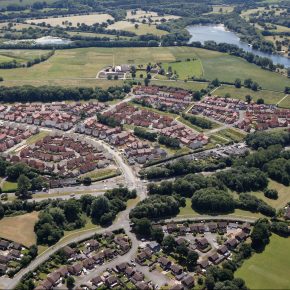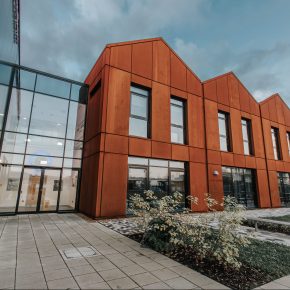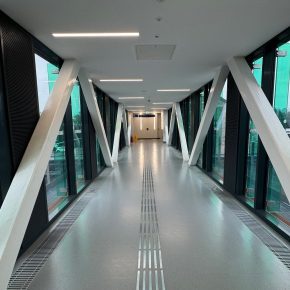
GUEST ARTICLE: What proportion of Green Belt would be required to meet the government’s housebuilding targets?
 Throughout the General Election campaign, the Green Belt was central to the debate about the housing crisis. The government has committed to building 1.5 million homes during the next parliament. As part of the means of achieving this, it has pledged to adopt a strategic approach to the use of Green Belt land as part of the delivery solution, including building on poor quality so-called ‘grey belt’ land. In a recent report, Rethinking the Green Belt, Carter Jonas has moved the debate on a stage, by considering what land might be used and how it might be released. David Churchill, Partner at Carter Jonas, has more…
Throughout the General Election campaign, the Green Belt was central to the debate about the housing crisis. The government has committed to building 1.5 million homes during the next parliament. As part of the means of achieving this, it has pledged to adopt a strategic approach to the use of Green Belt land as part of the delivery solution, including building on poor quality so-called ‘grey belt’ land. In a recent report, Rethinking the Green Belt, Carter Jonas has moved the debate on a stage, by considering what land might be used and how it might be released. David Churchill, Partner at Carter Jonas, has more…
The rhetoric surrounding the Green Belt can be powerful and politically charged. Take for example the common claim that building on the Green Belt amounts to ‘concreting over the countryside’. While some Green Belts contain larger proportions of environmentally protected or publicly accessible land, there is also a significant amount of land with little environmental or amenity value – now coined the ‘Grey Belt’. This raises the question of whether it is necessary to protect so much land, and whether greater flexibility within the Green Belt would allow for better allocation of land.

Green Belt increasing
The amount of land designated as Green Belt has recently increased – in the two years to April 2023, it rose by 25,443 ha (1.6%), returning Green Belt coverage to 2004 levels.
The government has committed to building 1.5 million homes (300,000 per annum over five years). Assuming an average plot size of 0.033 hectares, and even on the (highly unlikely) assumption that all of these homes would be built in the Green Belt, meeting this target would only equate to 3% of the current extent of Green Belt. The reality is that any Green Belt ‘land take’ will be far lower, with brownfield and non-Green Belt locations being prioritised. Hence the quantum of land to be removed from the Green Belt is likely to be pretty modest in the overall scheme of things.

Furthermore, our research shows the extent of Green Belt release required by region if housing stock was increased by 6% (to align with the 1.5m housebuilding target, and again provided solely on the Green Belt): in London, a 6% increase in housing stock would require 21.1% of Green Belt land. In contrast, in five regions (South East, North West, North East, East of England, West Midlands, and Yorkshire and the Humber), a 6% increase in housing would equate to less than 3% of Green Belt land being released.
While this modelling is interesting, it is only theoretical. Of course we are not advocating all new homes being located on the Green Belt but are suggesting that there are strategic benefits in releasing some Green Belt land for housing. For example, this approach could reduce the number of ‘leapfrogging’ developments – those located further from urban areas than is desirable, which increase residents’ carbon footprints through extensive commutes and impacts on both businesses’ and residents’ proximity to urban centres.
There are several options to address the urgent need for housing, each with its own benefits.
For example, we have considered major transport routes running through Green Belt land which present potential for sustainable development and prevent both ‘leapfrogging’ and urban sprawl. This showed considerable potential: for example, no fewer than 60% of the junctions on the A40 fall within the Green Belt. Greater leniency in developing in the Green Belt, particularly around these
interchanges, would pave the way for much-needed residential and commercial development, while helping to shorten journey times and reduce congestion.
The modest release of land from the Green Belt, perhaps through edge-of-town development or development along major transport arteries is part of this solution. Selecting sites of lower environmental value which are not designated for conservation would ensure that the impact on the natural environment is minimised.
The reality is that any Green Belt ‘land take’ to meet housing need will be far lower than the figures shown above, as brownfield and non-Green Belt locations would remain the focus of new housing, as the revised NPPF makes clear.
Building on the existing Green Belt will only ever be part of the solution. The government has recognised this and the development of new towns alongside urban extensions and regeneration projects will also be an option for planners and developers. Raising the rate of housebuilding is a major challenge and a combination of all these approaches is necessary.
Latest news

11th March 2025
ADSA’s 40 Years of Innovation
The Automatic Door Suppliers Association (ADSA) is kicking off its 40th anniversary with the launch of an animated timeline that showcases its incredible journey and industry-defining achievements.
Posted in Access Control & Door Entry Systems, Architectural Ironmongery, Articles, Building Associations & Institutes, Building Industry Events, Building Industry News, Building Products & Structures, Building Services, Doors, Facility Management & Building Services, Health & Safety, Innovations & New Products, Recruitment, Retrofit & Renovation, Security and Fire Protection, Training, Videos
11th March 2025
Senior answers the call at Merseyside’s new state-of-the-art fire station
Safe, secure, and sustainable aluminium fenestration solutions from Senior Architectural Systems have been installed at Merseyside Fire & Rescue Service’s brand-new fire station in Aintree.
Posted in Aluminium Products, Articles, Building Industry News, Building Products & Structures, Building Systems, Case Studies, Curtain Walling, Doors, Facades, Glass, Glazing, Restoration & Refurbishment, Retrofit & Renovation, Sustainability & Energy Efficiency, Walls, Windows
10th March 2025
Abloy UK & HKC to showcase innovative security solutions at The Security Event 2025
Abloy UK and HKC are set to make a significant impact at The Security Event 2025, inviting visitors to their collaborative stand 5/F50 to explore the latest innovations in integrated security solutions.
Posted in Access Control & Door Entry Systems, Architectural Ironmongery, Articles, Building Industry Events, Building Industry News, Building Products & Structures, Building Services, Doors, Exhibitions and Conferences, Facility Management & Building Services, Health & Safety, Information Technology, Innovations & New Products, Posts, Retrofit & Renovation, Security and Fire Protection, Seminars
10th March 2025
Passivent on the right track with Belfast railway footbridge project
Natural and hybrid ventilation solutions manufacturer Passivent has supplied nine bespoke Aircool® ventilators as part of a new fully enclosed, glazed footbridge spanning the railway track at the upgraded York Street Train Station in Belfast.
Posted in Air Conditioning, Articles, Building Industry News, Building Products & Structures, Building Services, Case Studies, Curtain Walling, Facility Management & Building Services, Heating, Ventilation and Air Conditioning - HVAC, Restoration & Refurbishment, Retrofit & Renovation, Walls
 Sign up:
Sign up: